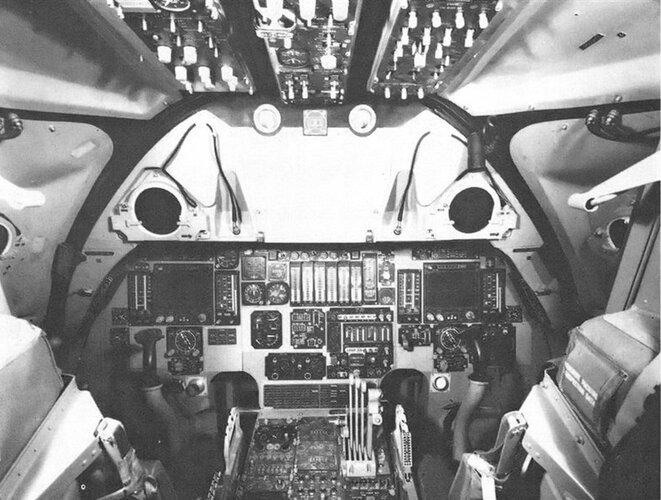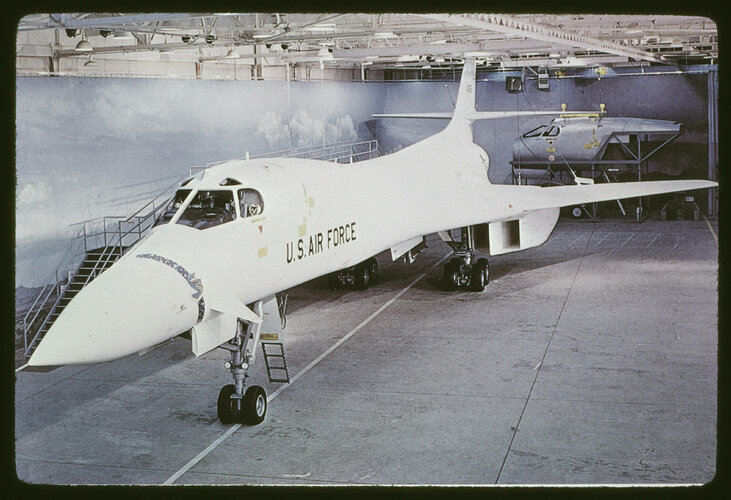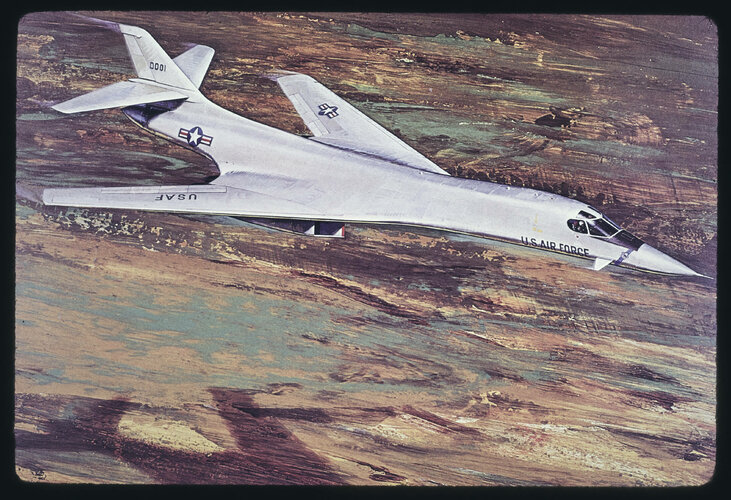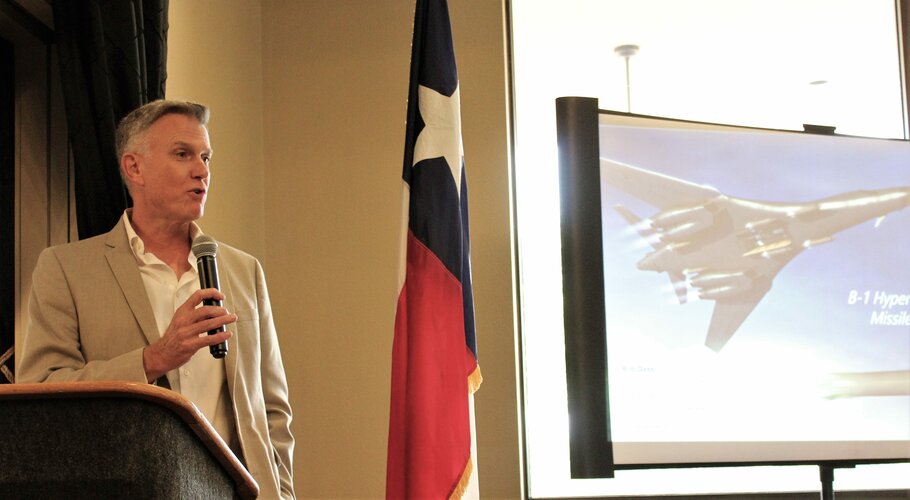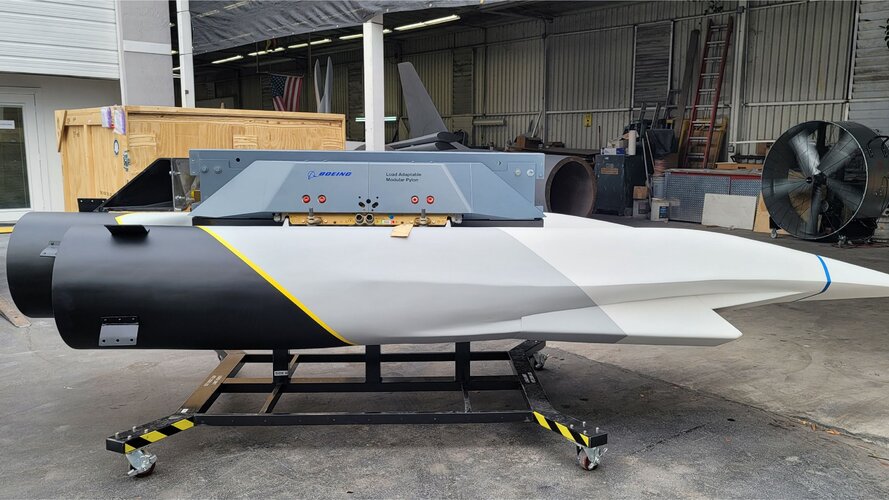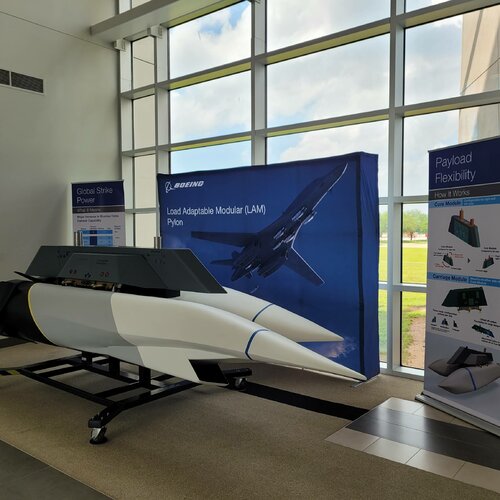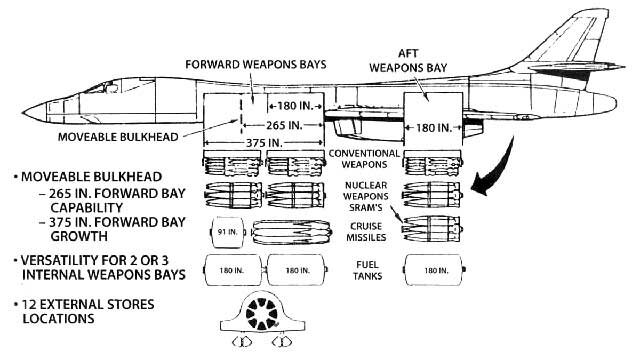LGB's were dropped from the Bone, there were pictures of it on the walls in South Base when I worked there years ago. One of the Bone drivers talked a bit about why the plug was pulled. It actually was pretty late in the program, very little was left to certify safe separation. ISTR the main issues were lack of designator (resolved now) and only 4 per rotary. JDAM came along and was a better solution at the time. Then laser JDAM came along and really what targets would require a GBU-10/24 that a GBU-31 or laser JDAM couldn't service?No no that not what will happen.View attachment 683872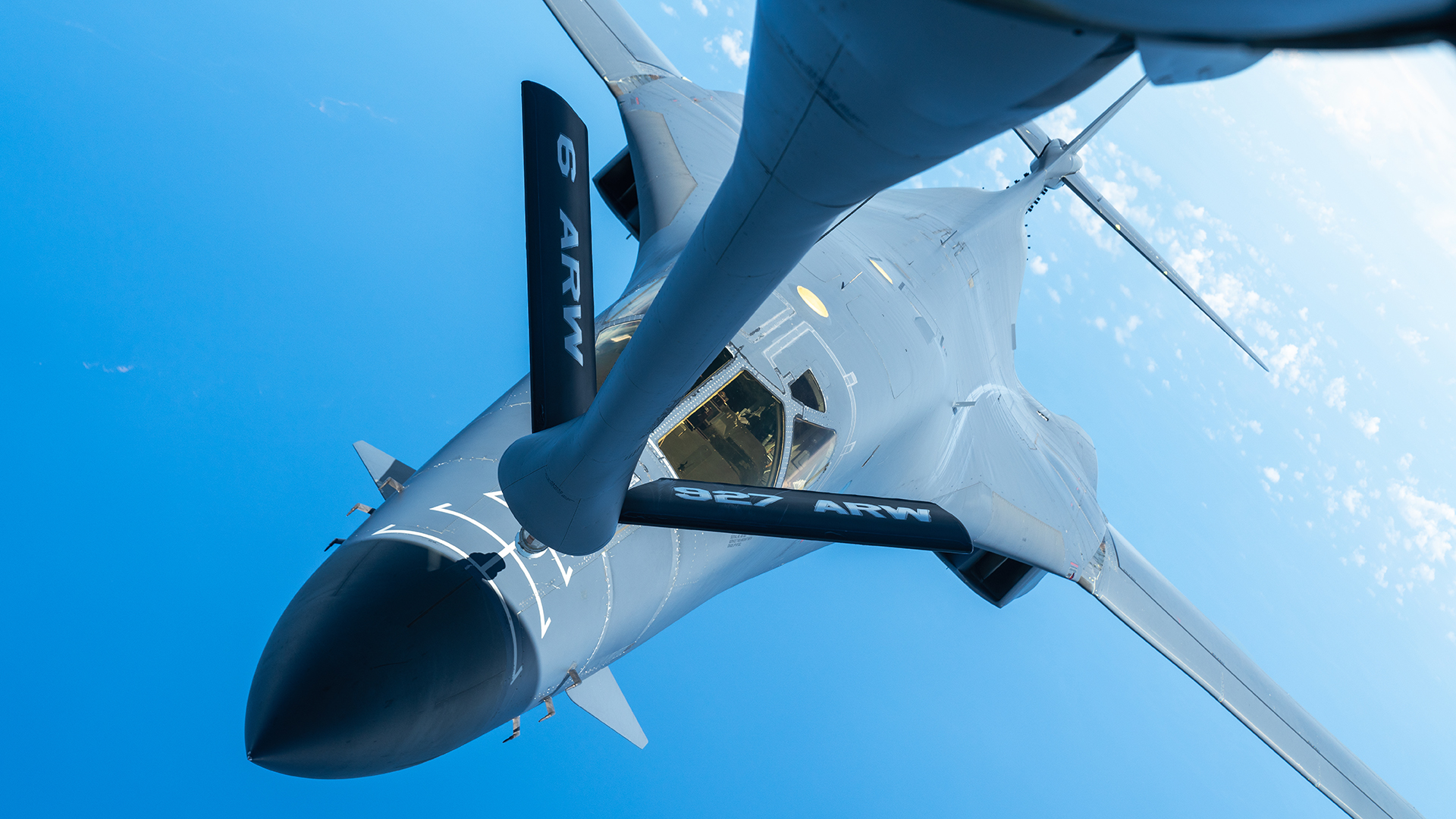
B-1B Bombers Are Hunting Illegal Fishing Boats Off South America
Recent B-1B sorties highlight the growing maritime role for the bombers, but illegal fishing is a national security concern in its own right.www.thedrive.com
Remember this is a B1.
You need to Photoshop about...
10 more of those bombs on that photo.
You are using an out of date browser. It may not display this or other websites correctly.
You should upgrade or use an alternative browser.
You should upgrade or use an alternative browser.
North American Rockwell / Boeing B-1 Lancer
- Thread starter flateric
- Start date
Exactly, it's not as if a 500 lb. laser JDAM wouldn't annihilate something that size. All 2,000 pounds get are smaller pieces and a bigger fireball.Don't need a GBU-24 to sink a Chinese fishing boat.Does make you wonder if the B-1B will be able to carry the SDB2, and if so, how many.
The Wave
ACCESS: Restricted
Hello,
I've found these two monochrome photographs showing the cockpit of a B-1B with thermal flash protection. I was curious, were these shields strictly inside the cockpit behind the glass, or was there any additional shielding also put on the exterior over the canopy glass as well? I haven't been able to find anything besides these two images and I'm wondering if any exterior shots of this setup exist.

View: https://twitter.com/clemente3000/status/1450930269310050304
I've found these two monochrome photographs showing the cockpit of a B-1B with thermal flash protection. I was curious, were these shields strictly inside the cockpit behind the glass, or was there any additional shielding also put on the exterior over the canopy glass as well? I haven't been able to find anything besides these two images and I'm wondering if any exterior shots of this setup exist.
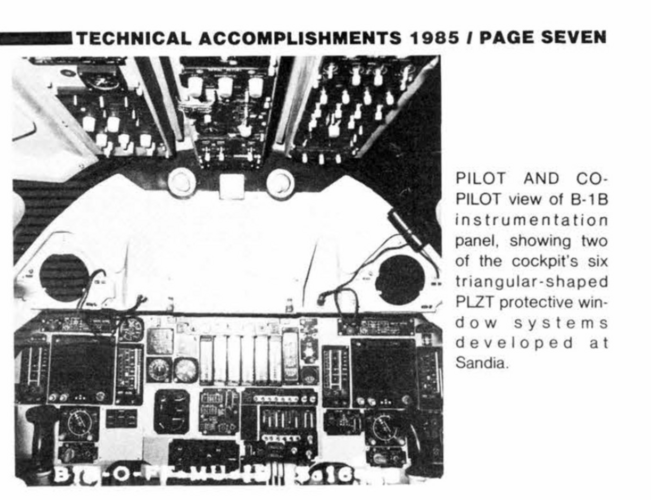
View: https://twitter.com/clemente3000/status/1450930269310050304
Attachments
Last edited:
- Joined
- 3 June 2006
- Messages
- 2,843
- Reaction score
- 2,545
Source:[...]The pilots have Thermal Protection Flashblindness Equipment (TPFE), which protects the pilots from being blinded by the brilliant light pulse of a nuclear explosion. TPFE consists of aluminum panels to cover the cockpit windows. The pilots can fly the B-1B with the panels blocking the view out the windows because six of the shields have cutouts for EDU-4/A polarized lead lanthanum zirconate titanate (PLZT) portholes. PLZT is a material with the unusual property that when it is exposed to a bright flash of light, it reduces the intensity of the light to 0.003 per cent of the initial intensity with a reaction time of 150 microseconds, much faster than the blink of an eye. The colloquial term that the crews use for this equipment is ‘plizit’. [...]
The Supersonic BONE
A Development and Operational
History of the B-1 Bomber, page 99
Copyright © Kenneth P. Katz, 2022
ISBN 978 1 39901 471 7
- Joined
- 9 October 2009
- Messages
- 19,991
- Reaction score
- 10,489
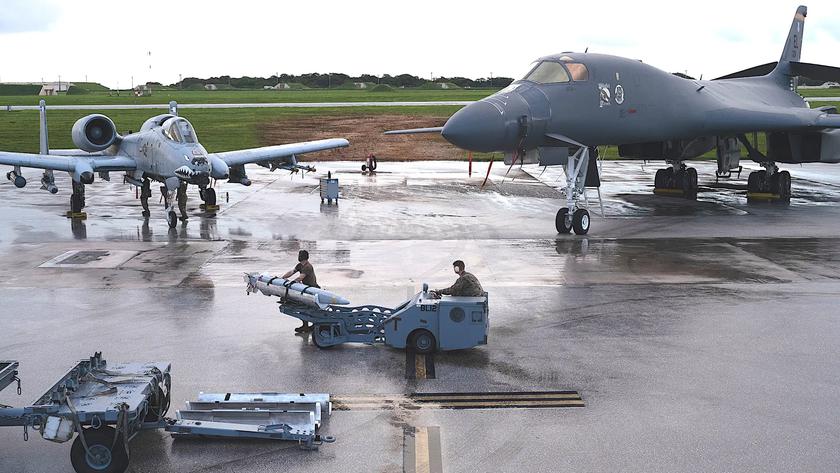
U.S. Air Force wants to use A-10 Thunderbolt II attack aircraft along with B-1B Lancer supersonic bombers to destroy enemy air defense systems
The U.S. Air Force began using B-1B Lancer supersonic bombers paired with A-10 Thunderbolt II attack aircraft as part of an exercise on the island of Guam.gagadget.com
aonestudio
I really should change my personal text
- Joined
- 11 March 2018
- Messages
- 2,546
- Reaction score
- 5,970
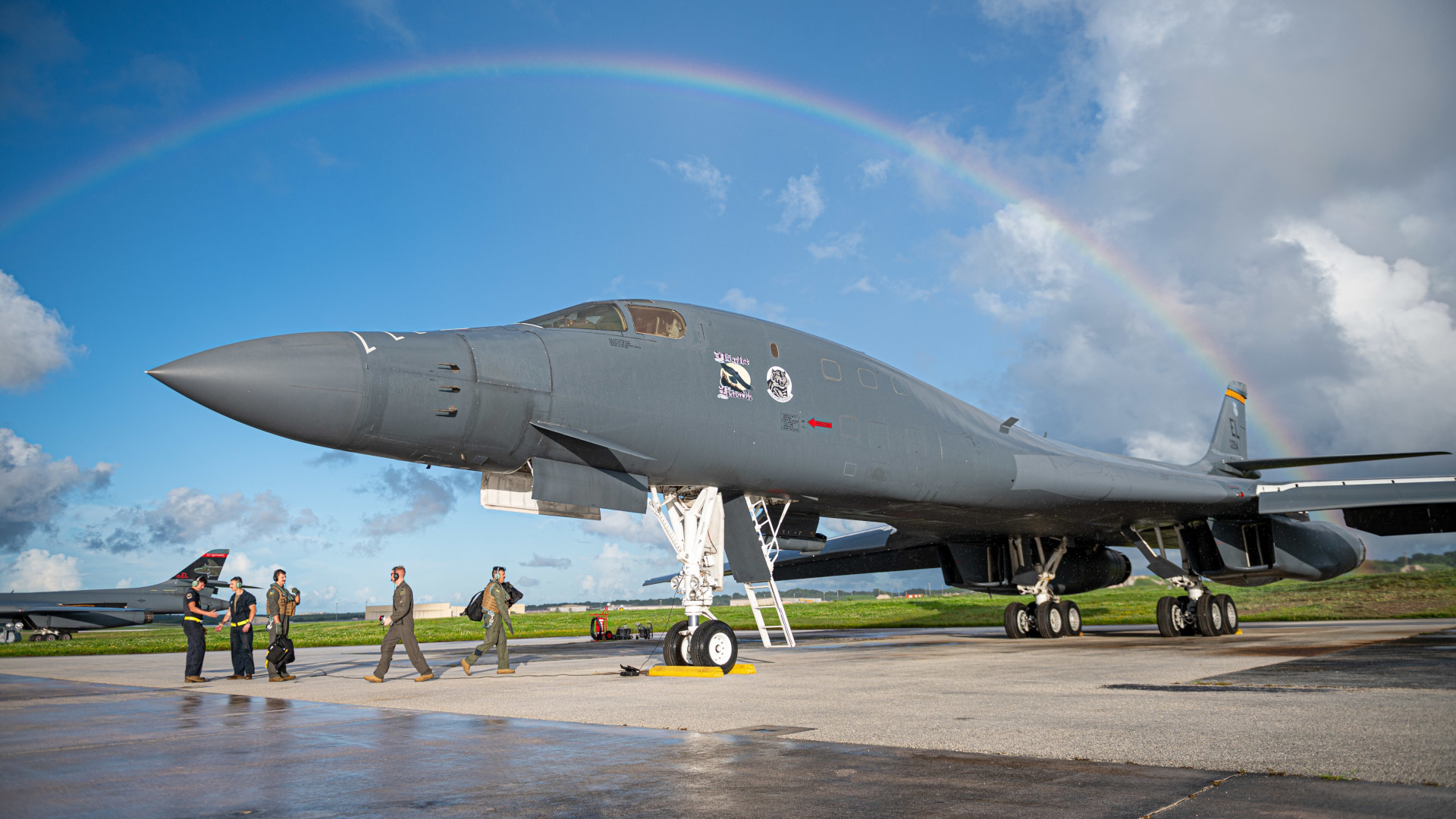
B-1B Bomber's New Ultra Long-Range Focus Hints At Future B-21 Ops
Very long-range missions are now the B-1 community's 'bread and butter,' and are what one can expect to see with the B-21.
- Joined
- 3 June 2011
- Messages
- 17,338
- Reaction score
- 9,075
"Col. Sheffield pointed out that B-1Bs are set to be able to carry 36 JASSMs, among other weapon loads, in the future with the planned restoration of the bomber's ability to carry munitions on external pylons. The Air Force has separately talked about integrating new, longer-range weapons onto the B-1B, including future hypersonic missiles."
B-1B Bomber's New Ultra Long-Range Focus Hints At Future B-21 Ops
Very long-range missions are now the B-1 community's 'bread and butter,' and are what one can expect to see with the B-21.www.thedrive.com
- Joined
- 3 June 2011
- Messages
- 17,338
- Reaction score
- 9,075
The pilot or WSO (don't recall which though it was probably the latter) that hit that MD500 with a 2,000lb LGB during Desert Storm said it, "vaporized like in a James Bond movie".Exactly, it's not as if a 500 lb. laser JDAM wouldn't annihilate something that size. All 2,000 pounds get are smaller pieces and a bigger fireball.Don't need a GBU-24 to sink a Chinese fishing boat.Does make you wonder if the B-1B will be able to carry the SDB2, and if so, how many.
Yeah, got to love the Mk84 family, they do tend to make a big boomThe pilot or WSO (don't recall which though it was probably the latter) that hit that MD500 with a 2,000lb LGB during Desert Storm said it, "vaporized like in a James Bond movie".
Forest Green
ACCESS: Above Top Secret
- Joined
- 11 June 2019
- Messages
- 5,111
- Reaction score
- 6,719
And what is wrong with that?All 2,000 pounds get are smaller pieces and a bigger fireball.
- Joined
- 16 April 2008
- Messages
- 8,398
- Reaction score
- 10,365
Yes and bout 96 in bay, which the same for tge SDB1 since they both need the same requirements for size and datalinks.
SDB has been on the B-1B "to-do" list for a while . The Bone was an objective platform for SDB II back in the early 2000s, but I'm not sure the integration has ever actually happened. It was still on the "Potential Future Efforts" list as of 2018.
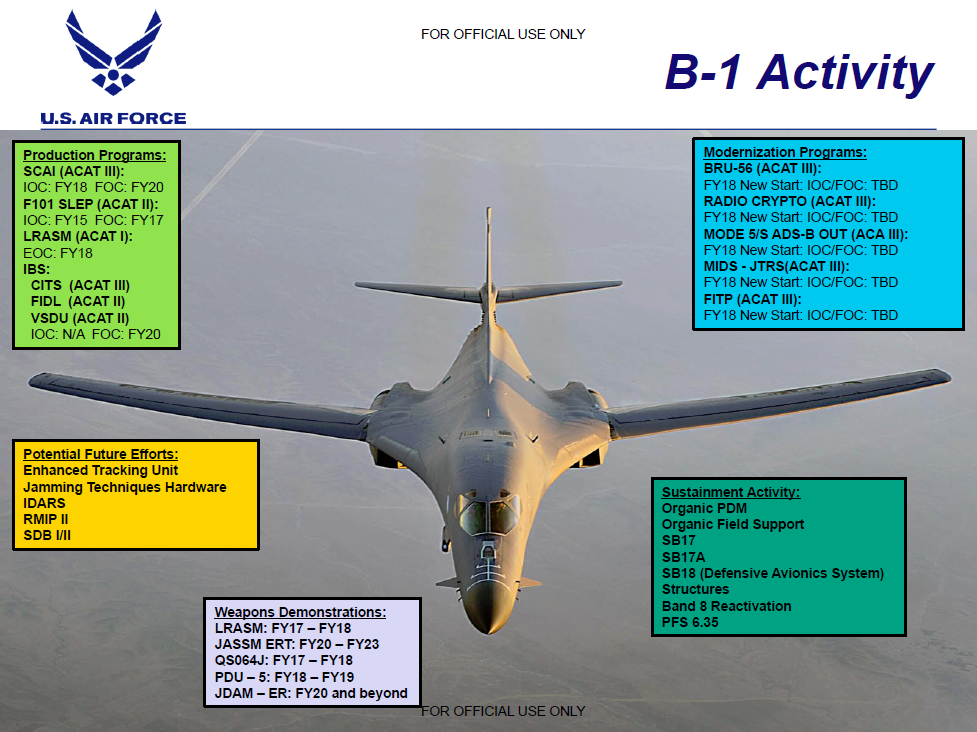
Last edited:
I'd be pleasantly surprised if anything new is integrated or if it gets external hard points. The training looks tailored to being exclusively a cruise missile platform and I can't imagine the short range of SDBs to be worth the price of entry for this platform. Externals clearly would have a use, though I'd assume large external stores would really dig into fuel consumption.
NothingAnd what is wrong with that?All 2,000 pounds get are smaller pieces and a bigger fireball.
Forest Green
ACCESS: Above Top Secret
- Joined
- 11 June 2019
- Messages
- 5,111
- Reaction score
- 6,719
aonestudio
I really should change my personal text
- Joined
- 11 March 2018
- Messages
- 2,546
- Reaction score
- 5,970
- Joined
- 3 June 2011
- Messages
- 17,338
- Reaction score
- 9,075
They need an air-launched version of these:I'd be pleasantly surprised if anything new is integrated or if it gets external hard points. The training looks tailored to being exclusively a cruise missile platform and I can't imagine the short range of SDBs to be worth the price of entry for this platform. Externals clearly would have a use, though I'd assume large external stores would really dig into fuel consumption.
- Joined
- 3 June 2011
- Messages
- 17,338
- Reaction score
- 9,075
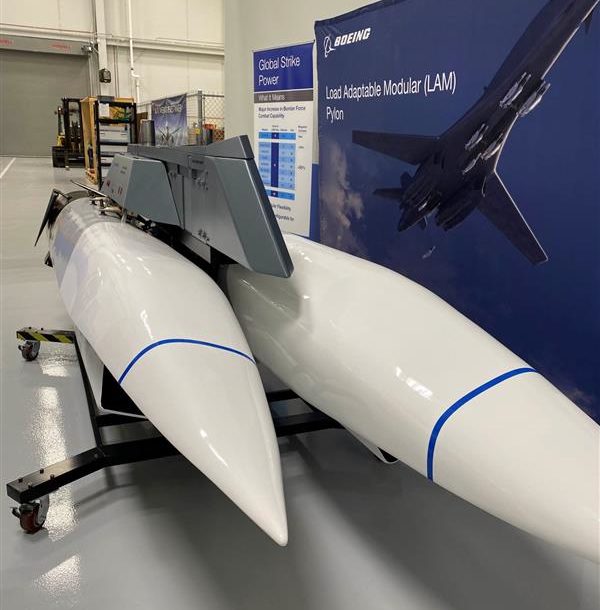
New Boeing Pylon Could Shift Hypersonics Testing to B-1, Add Bomb Capacity
A new Boeing pylon for the B-1 bomber could increase its loadout and let the Air Force shift hypersonics testing to the Lancer, Boeing says.
Forest Green
ACCESS: Above Top Secret
- Joined
- 11 June 2019
- Messages
- 5,111
- Reaction score
- 6,719
Wonder how many MALDs it can carry?
- Joined
- 1 April 2006
- Messages
- 10,730
- Reaction score
- 6,760
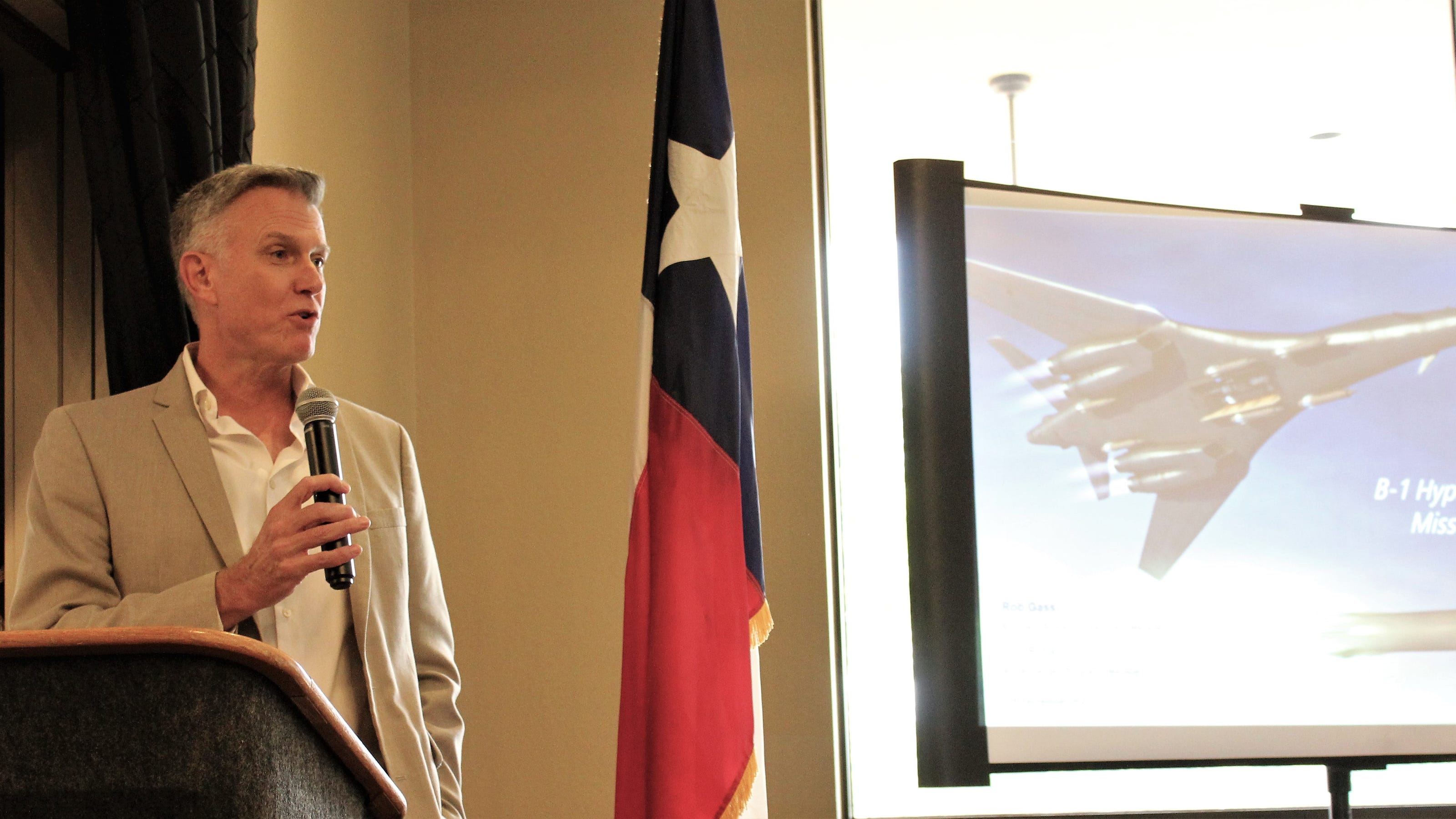
Former Dyess AFB commander discusses 'hypersonic weaponry' at Abilene luncheon
The U.S. trails Russia and China, but there's a plan to tap the B-1's capabilities to launch missiles.
www.reporternews.com
Attachments
Question for MKellytx, or anyone else who happens to know:
Does the USAF still possess the equipment and training to install internal fuel tanks in the B-1 bomb bays or was this capability discarded? It occurred to me that were someone to actual pay for the external pylons, it might be advantageous to place weapons there in lieu of the bomb bays where more fuel could be stored (though obviously there is a drag penalty to pay).
Does the USAF still possess the equipment and training to install internal fuel tanks in the B-1 bomb bays or was this capability discarded? It occurred to me that were someone to actual pay for the external pylons, it might be advantageous to place weapons there in lieu of the bomb bays where more fuel could be stored (though obviously there is a drag penalty to pay).
@Josh_TN Yes, when I was at Dyess 2002-5 we regularly used the long 20,000 lb. tanks in the forward bay. The short 10,000 lb. tanks weren’t used since START wouldn’t allow the bulkhead to be moved forward. Not that it really mattered since the boxes to control ALCM/CALCM were never purchased for the Bone. When we operated out of Diego it was pretty common to put a 20,000 lb. tank forward and 16 GBU-31’s in the aft two bays. I left bombers in 2008, so have no clue if they maintained the capability.Question for MKellytx, or anyone else who happens to know:
Does the USAF still possess the equipment and training to install internal fuel tanks in the B-1 bomb bays or was this capability discarded? It occurred to me that were someone to actual pay for the external pylons, it might be advantageous to place weapons there in lieu of the bomb bays where more fuel could be stored (though obviously there is a drag penalty to pay).
Since flights from Diego were pretty long, pretty quickly we started operating closer to the theater and had less need to put the extra tank in the A/C. FWIW the big tanks worked just fine, and we used them to deploy the jets from CONUS while I was still in uniform.
@Josh_TN Yes, when I was at Dyess 2002-5 we regularly used the long 20,000 lb. tanks in the forward bay. The short 10,000 lb. tanks weren’t used since START wouldn’t allow the bulkhead to be moved forward. Not that it really mattered since the boxes to control ALCM/CALCM were never purchased for the Bone. When we operated out of Diego it was pretty common to put a 20,000 lb. tank forward and 16 GBU-31’s in the aft two bays. I left bombers in 2008, so have no clue if they maintained the capability.
Since flights from Diego were pretty long, pretty quickly we started operating closer to the theater and had less need to put the extra tank in the A/C. FWIW the big tanks worked just fine, and we used them to deploy the jets from CONUS while I was still in uniform.
I didn’t realize there were two different tank sizes. I had thought a 10,000lb tank could be substituted for two of the three bomb bays? I didn’t realize the bulkhead ha to move…currently isn’t that located between bay 2 and 3?
The 10,000 lb tank, the short tank, was made for carriage of ALCM’s. Since the ALCM’s are too long for the bomb bays the forward two bomb bays feature a movable bulkhead that allowed internal carriage of 8 ALCM, the forward section of the bay is too short to carry any weapons so a short tank was made that would go there and add 10,000 lbs of additional fuel.I didn’t realize there were two different tank sizes. I had thought a 10,000lb tank could be substituted for two of the three bomb bays? I didn’t realize the bulkhead ha to move…currently isn’t that located between bay 2 and 3?
The short tanks won’t fit in the regular sized bay, on the the 20,000 lb tanks. Normally we’d only put one in the forward although I think we may have on a handful of occasions put two in the front and middle to rotate a jet into the theater, but memory fades. One thing that doesn’t fade is how long it took to get airborne and how slowly they climbed when they were that heavy.
Thanks guys, I was thinking of the 20,000lb tank and didn’t realize there was a shortened option for ALCM carriage. Actually I didn’t realize B-1s had a configuration for internal ALCMs. The B-1 uses a separate shorter rotary launcher than the common strategic used for AGM-86 (and other stores), correct?
Also at this point there isn’t any limitation to what the B-1 can carry so long as it isn’t nuclearized? Were not the hard point and bulkhead limitations part of old START, with New START just limiting the total number of launch platforms?
Also at this point there isn’t any limitation to what the B-1 can carry so long as it isn’t nuclearized? Were not the hard point and bulkhead limitations part of old START, with New START just limiting the total number of launch platforms?
Thanks guys, I was thinking of the 20,000lb tank and didn’t realize there was a shortened option for ALCM carriage. Actually I didn’t realize B-1s had a configuration for internal ALCMs. The B-1 uses a separate shorter rotary launcher than the common strategic used for AGM-86 (and other stores), correct?
I showed up long after START, so I never saw the ALCM rotary for the Bone. The CSRL’s now in use were the nuclear ones modified for conventional weapons. It’s also pretty questionable how well the aircraft would fly with 20 ALCM’s on board, lots of weight and lots of drag. The plane doesn’t have enough wing and thrust to fly heavy in the 20’s when it’s heavy. That said, the thought was when the B-2’s took over the penetration role that the Bones would become ALCM shooters. With the end of the Cold War and SAC The capability was never pursued, the boxes never purchased and in the early 2000’s the space was used for data link boxes.
Also at this point there isn’t any limitation to what the B-1 can carry so long as it isn’t nuclearized? Were not the hard point and bulkhead limitations part of old START, with New START just limiting the total number of launch platforms?
The only limitation to what it can carry is what’s certified, there are some weapons that won’t come out of some bays nicely. Some were dropped but never certified. The OAS also would need the right software for some other weapons, so there’s stuff that isn’t/won’t be integrated given the limited life left on the airframes.
I was a START escort and did escort the Russians for one of their visits (they seemed to like the Taste of Abilene weekend). The external hard points had to be disabled by a ”process equivalent to welding”. When we integrated Sniper we had to get the Russians to agree that it wasn’t a treaty violation to use the pylon. To be honest I was long gone from bombers when new START arrived, so what you’ve read is as good as my knowledge Of the topic.
- Joined
- 3 June 2011
- Messages
- 17,338
- Reaction score
- 9,075
I know it's a pipe dream but would a swap for F135s fit and if so how do you think it would change things?Thanks guys, I was thinking of the 20,000lb tank and didn’t realize there was a shortened option for ALCM carriage. Actually I didn’t realize B-1s had a configuration for internal ALCMs. The B-1 uses a separate shorter rotary launcher than the common strategic used for AGM-86 (and other stores), correct?
I showed up long after START, so I never saw the ALCM rotary for the Bone. The CSRL’s now in use were the nuclear ones modified for conventional weapons. It’s also pretty questionable how well the aircraft would fly with 20 ALCM’s on board, lots of weight and lots of drag. The plane doesn’t have enough wing and thrust to fly heavy in the 20’s when it’s heavy. That said, the thought was when the B-2’s took over the penetration role that the Bones would become ALCM shooters. With the end of the Cold War and SAC The capability was never pursued, the boxes never purchased and in the early 2000’s the space was used for data link boxes.
Also at this point there isn’t any limitation to what the B-1 can carry so long as it isn’t nuclearized? Were not the hard point and bulkhead limitations part of old START, with New START just limiting the total number of launch platforms?
The only limitation to what it can carry is what’s certified, there are some weapons that won’t come out of some bays nicely. Some were dropped but never certified. The OAS also would need the right software for some other weapons, so there’s stuff that isn’t/won’t be integrated given the limited life left on the airframes.
I was a START escort and did escort the Russians for one of their visits (they seemed to like the Taste of Abilene weekend). The external hard points had to be disabled by a ”process equivalent to welding”. When we integrated Sniper we had to get the Russians to agree that it wasn’t a treaty violation to use the pylon. To be honest I was long gone from bombers when new START arrived, so what you’ve read is as good as my knowledge Of the topic.
Well @sferrin it’s very interesting that you ask that particular question. When Col George was the 7 BW/CC a group of Washington think tank types flew to Abilene to pitch the F119 re-engine proposal to get his feedback since he just got out of a staff role for SECAF, and I got an advance copy and invite to the pitch. The sources that group used were seriously suspect, which I pointed out to my squadron commander, but wasn’t about to point out in a room full of Lt Col’s and Col’s, especially since Col George was highly supportive of my application to go to UPT. Pretty much use F135’s was my recommendation to my squadron commander, so funny you mention that!I know it's a pipe dream but would a swap for F135s fit and if so how do you think it would change things?I showed up long after START, so I never saw the ALCM rotary for the Bone. The CSRL’s now in use were the nuclear ones modified for conventional weapons. It’s also pretty questionable how well the aircraft would fly with 20 ALCM’s on board, lots of weight and lots of drag. The plane doesn’t have enough wing and thrust to fly heavy in the 20’s when it’s heavy. That said, the thought was when the B-2’s took over the penetration role that the Bones would become ALCM shooters. With the end of the Cold War and SAC The capability was never pursued, the boxes never purchased and in the early 2000’s the space was used for data link boxes.
That said, at the time of the pitch, 2003-4, the F135 was very much WIP. It’s all highly speculative, what ifs, but they would definitely improve higher altitude performance. The lower bypass ratio would have a better thrust lapse than the F101, and the F135 would put out as much static thrust in Mil as the F101 in full burner. It’s questionable if the structure could handle 50% more thrust without massive upgrade. It’s also a fair question if the fixed inlets would be able to provide adequate flow to the engine that would allow super-cruise. Now, bring back the variable intakes of the A model…
Here are a few screen captures from my 1986 USAF TPS manual performance section that illustrate the engineering at work.

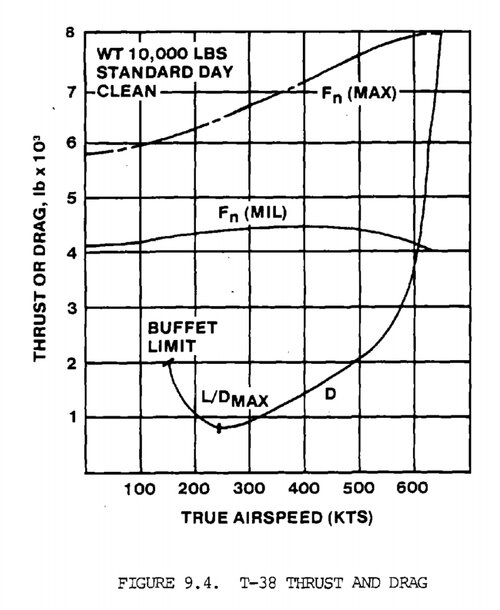
Now, the aerodynamics aren’t going to change so the wing loading subsonic will not be affected regardless of how much thrust is present. The amount of help though can be extrapolated from the turn charts in the -1 by comparison of the Mil level turn versus the full burner for level turns at altitude. Now, if the inlets are reworked for supersonic then the level flight turns get higher. The only problem there is that bomb bay doors are limited to .94 M, not an insurmountable problem, but again a lot more work plus all of the safe separation work for supersonic flight, shock waves make that a lot of fun. If it works though it could give a lot more range for JDAM’s.
It’s an interesting intellectual bunny trail, no doubt.
jsport
what do you know about surfing Major? you're from-
- Joined
- 27 July 2011
- Messages
- 6,565
- Reaction score
- 3,920
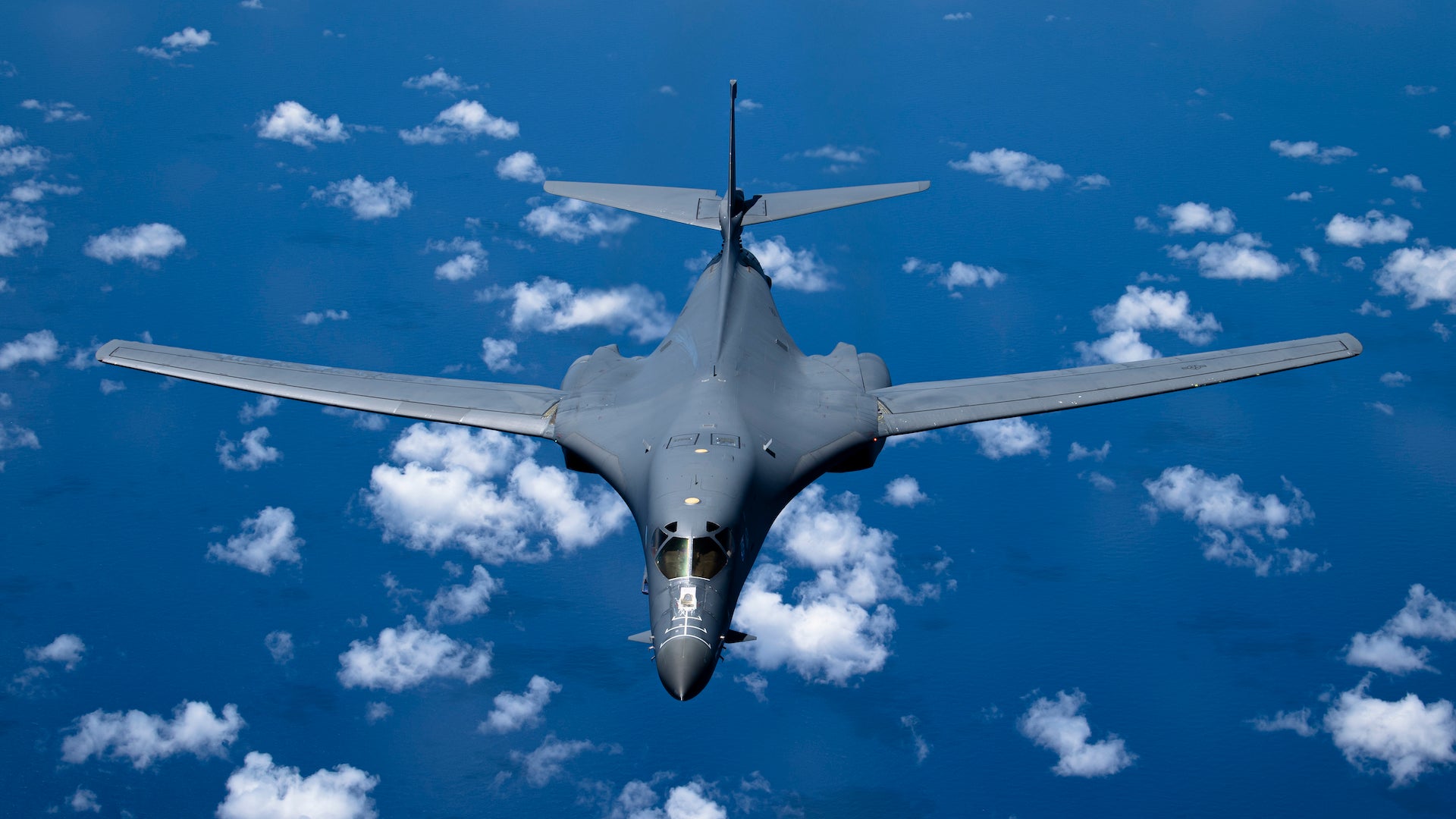
The Air Force wants to load up the B-1B Lancer with more bombs than ever before
Hold me closer tiny Lancer.

The Air Force wants to load up the B-1B Lancer with more bombs than ever before
Hold me closer tiny Lancer.taskandpurpose.com
I’ll believe it when I see it fully funded.
Saying its rcs is lower is like saying one is as big as barn on radar and the other one is as big as a barn without its doors. I've been hearing that bs for 37+ years and its rcs reduction argument is a joke. There is nothing stealthy about it.The JimmyCarter B-1B was a compromise of the more maintainable B-1A so the B-1B was obsolete and hard to maintain from its inception.
Wrong. The B-1B traded top maximum speed for lower RCS. It was determined the net effect was to make it MORE survivable. Also the B-1A was argualby less maintainable. It had much more complicated overwing fairings, inlets, and engine nozzles.
The B-1B has many great advantages but certainly needs to be replaced and the, smaller than B-2, B-21 is not the answer for payloads
Your options are: 1. Maintained B-1Bs
2, Nothing.
There is no door #3.
Given its proposed low altitude flight a fighter looking down at it doesn't care a damn the engine fans are hidden. Just one example.
The bone was supposed to get us to the b2 and be retired. That's it. The engineers fell out of their chairs when the usaf was doing touch and goes... That's how well built the bone was.
Maintain it all you want but hope you don't need to fly it too much longer
Last edited:
- Joined
- 3 June 2011
- Messages
- 17,338
- Reaction score
- 9,075
Tell us how you really feel.Saying its rcs is lower is like saying one is as big as barn on radar and the other one is as big as a barn without its doors. I've been hearing that bs for 37+ years and its rcs reduction argument is a joke.The JimmyCarter B-1B was a compromise of the more maintainable B-1A so the B-1B was obsolete and hard to maintain from its inception.
Wrong. The B-1B traded top maximum speed for lower RCS. It was determined the net effect was to make it MORE survivable. Also the B-1A was argualby less maintainable. It had much more complicated overwing fairings, inlets, and engine nozzles.
The B-1B has many great advantages but certainly needs to be replaced and the, smaller than B-2, B-21 is not the answer for payloads
Your options are: 1. Maintained B-1Bs
2, Nothing.
There is no door #3.
Given its proposed low altitude flight a fighter looking down at it doesn't care a damn the engine fans are hidden. Just one example.
The bone was supposed to get us to the b2 and be retired. That's it. The engineers fell out of their chairs when the usaf was doing touch and goes... That's how well built the bone was
Supposedly the LAM’s are already out at ED for testing. They might not ever go operational, but while my old squadron tests the new radar, the new engines and any new software drops on the BUFF at least the Bone can drop some of the hypersonic stuff.
The Air Force wants to load up the B-1B Lancer with more bombs than ever before
Hold me closer tiny Lancer.taskandpurpose.com
I’ll believe it when I see it fully funded.
FighterJock
ACCESS: Top Secret
- Joined
- 29 October 2007
- Messages
- 4,226
- Reaction score
- 3,415
Let's see what happens TomcatVIP, it will be interesting to see if the BONE gets to fly at Paris. One of the loudest planes I have ever had the pleasure to see.
- Joined
- 6 September 2006
- Messages
- 4,326
- Reaction score
- 7,510
Maybe its a new stealth mode?

 www.gloucestershirelive.co.uk
www.gloucestershirelive.co.uk

People say USAF B-1B bombers look like penguins on return to RAF Fairford
From a certain perspective, they can look like the flightless bird
- Joined
- 3 June 2006
- Messages
- 2,843
- Reaction score
- 2,545
Video:Erik Johnston said:B-1 Walkaround Lancer Bone
The most detailed walkaround documentary of the B-1 to this day!! It's crazy long but full of tons of information about this amazing airplane and the people that maintain and crew it.
Would like to thank my friends Jeff Bolton, Justin Oakes, and all the Air Force Personnel at Ellsworth AFB for helping me make this video. This was an amazing experience that I will never forget!!
Code:
https://youtu.be/gqDj7o19CWwSimilar threads
-
-
North American/Rockwell CREST,and some projects
- Started by hesham
- Replies: 5
-
North American Rockwell/General Dynamics Phase B Shuttle specs
- Started by Triton
- Replies: 3
-
-
North American B-25 development (NA-40, P442, etc.)
- Started by Apophenia
- Replies: 23

